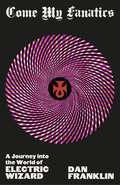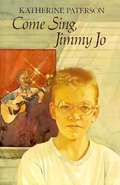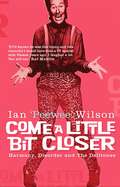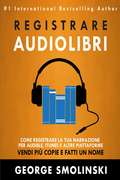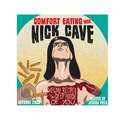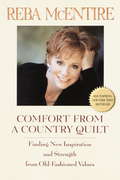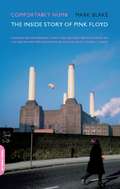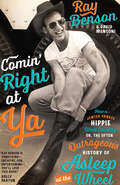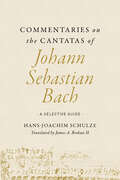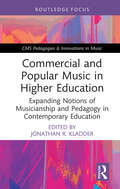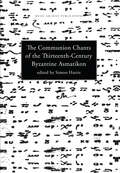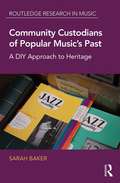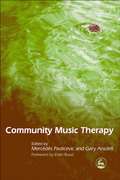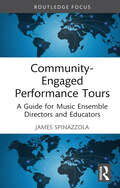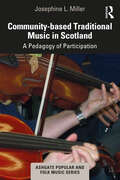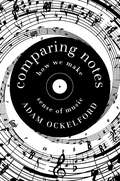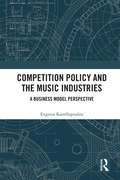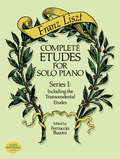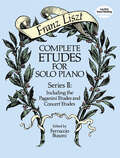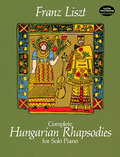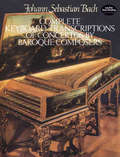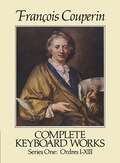- Table View
- List View
Come My Fanatics: A Journey into the World of Electric Wizard
by Dan Franklin'Electric Wizard is heavy, man - we don't sing about love and flowers.' Jus ObornIn 1993, in the market town of Wimborne Minster in Dorset, England, the heaviest band in the world was born. Led by guitarist and singer Jus Oborn, Electric Wizard began as an untameable power trio. They inhaled the iniquity of their lives and vomited it out in colossal waves of doom metal, synthesising the forbidding local landscape, biker culture, video-nasties, black magic rituals and titanic doses of psychedelics. In 1997 they released their revolutionary second album, Come My Fanatics... Then, after triumphant and calamitous tours of the USA and following the release of arguably the heaviest rock album ever recorded, 2000's Dopethrone, Electric Wizard all but imploded, destroyed by the very reality they were fighting against. However, when guitarist Liz Buckingham joined Oborn on guitar for We Live, they drew a magic circle around themselves in a new line-up that went on to explore deeper occult horrors on modern doom classic Witchcult Today onwards. Come My Fanatics is a kaleidoscopic exploration of the subculture the band has absorbed and, in turn, created. From seventies exploitation cinema, through the writers of Weird Tales magazine and a panoply of the marginal and downright sinister, to the band's own live ceremonial happenings - this is Electric Wizard's world. We're just dying in it.
Come Sing, Jimmy Jo
by Katherine PatersonWhen his family becomes a successful country music group and makes him a featured singer, eleven-year-old James has to deal with big changes in all aspects of his life, even his name.
Come a Little Bit Closer
by Ian WilsonIan 'Peewee' Wilson has been singing bass doo-wop with iconic vocal group The Delltones since the 1950s and the First Wave of Australian pop. In this breezy and brilliant memoir, Peewee recalls the highs and inimitable lows of life fronting Australia's longest-performing vocal group. Beyond the stage door he reveals the secret to his longevity: a larrikin spirit honed in his beach-bumming youth, and a wide-eyed curiosity that led him to dabble in hallucinogenic substances and chase Playboy Bunnies (not at the same time). It's all part of Peewee's never-ending search for the underlying meaning of it all. Come a little bit closer to the Beanpole of Bop.
Come registrare il tuo audiolibro per Audible, iTunes, ed altre piattaforme
by George Smolinski Mattia BarattoQuesta è una guida completa con istruzioni video che vi permetterà di registrare il vostro audiolibro. Lo so perchè ho utilizzato QUESTE STESSE TECNICHE per registrare questo stesso libro per Audible! Gli audiolibri sono la più grande novità nell'ambito delle pubblizazioni oggigiorno. C'è stata una crescita esplosiva di vendite di audiolibri negli ultimi 4 anni, e voi dovete avere il vostro libro in formato audio. Questa guida vi insegnerà gli ingressi e le uscite della registrazione di audiolibri, anche se lo volete fare da soli! Argomenti discussi in questa guida: 1. L'equipaggiamento necessario per registrare audiolibri e narrazioni 2. Come iniziare a registrare audiolibri con GarageBand e Audacity 3. Consigrli e trucchi per aiutarvi partire con il piede giusto nella narrazione di audiolibri 4. Come caricare il vostro libro finito su Audible e iTunes libri 5. Risorse utili per far produrre il vostro audiolibro se non siete bravi con il fai-da-te
Comfort Eating with Nick Cave: Vegan Recipes to Get Deep Inside of You
by Joshua Ploeg Automne ZinggPoor Nick Cave. He's sitting all alone, eating frosting with a spoon. Now you can join him as he soothes himself with a giant bowl of mashed potatoes, a tofu dog, peanut butter from the jar, spicy potato chips, or veggie pot pies. Comfort Eating with Nick Cave is the perfect accompaniment to his music. When despair and deception come a-knockin' at your door, get a giant cinnamon roll inside of you. Maybe you shouldn't have let love in, but at least you can let tacos and baked ziti in, too. By following the recipes in this book, you can feed your sorrows with delicious vegan comfort food classics right along with Nick.
Comfort from a Country Quilt
by Reba McentireThe New York Times Bestseller That Reads Like a Back-Porch Conversation with Reba!In a dazzling career, Reba McEntire has become a true country superstar--and a trailblazing businesswoman with her own multimedia entertainment corporation. Yet she is a rare celebrity who is also beloved by her millions of fans for the way she lives her life. For Reba has balanced the demands of career and family, succeeded in show business without sacrificing her values, and kept up with the times without abandoning her country roots.Here Reba writes about the roles a modern woman tries to fill, roles as many and varied as the fabric pieces of an heirloom quilt. Facing the challenges of being a wife, mother, stepmother, daughter, sister, performer, executive, community member, and Christian, Reba has found inspiration and comfort in the values of her past as an Oklahoma ranch girl. In this generous and wise book, she shows how you can keep traditional values fresh and vital in your own search for a fulfilling life.Whether you read it for instant warmth or lasting inspiration, Comfort from a Country Quilt is a book that will make your spirits soar like the sweet high notes of a Reba McEntire song.
Comfortably Numb: The Inside Story of Pink Floyd
by Mark BlakeMark Blake draws on his own interviews with band members as well as the group's friends, road crew, musical contemporaries, former housemates, and university colleagues to produce a riveting history of one of the biggest rock bands of all time. We follow Pink Floyd from the early psychedelic nights at UFO, to the stadium-rock and concept-album zenith of the seventies, to the acrimonious schisms of the late '80s and '90s. Along the way there are fascinating new revelations about Syd Barrett's chaotic life at the time of Piper at the Gates of Dawn, the band's painstaking and Byzantine recording sessions at Abbey Road, and the fractious negotiations to bring about their fragile, tantalizing reunion in Hyde Park.Meticulous, exacting, and ambitious as any Pink Floyd album, Comfortably Numb is the definitive account of this most adventurous-and most English-rock band.
Comin' Right at Ya: How a Jewish Yankee Hippie Went Country, or, the Often Outrageous History of Asleep at the Wheel (Brad and Michele Moore Roots Music Series) (Brad and Michele Moore Roots Music Series)
by David Menconi Ray Benson&“Full of humor and humility . . . Since Benson started Asleep at the Wheel as a working-class country band, it&’s one helluva ride worth telling.&” —The Austin Chronicle A six-foot-seven-inch Jewish hippie from Philadelphia starts a Western swing band in 1970. It sounds like a joke but—more than forty years, twenty-five albums, and nine Grammy Awards later—Asleep at the Wheel is still drawing crowds around the world. The roster of musicians who&’ve shared a stage with the Wheel is a who&’s who of American popular music—Van Morrison, Willie Nelson, Dolly Parton, Emmylou Harris, George Strait, Vince Gill, Lyle Lovett, and so many more. And the bandleader who&’s brought them all together is the hippie that claimed Bob Wills&’s boots: Ray Benson. In this hugely entertaining memoir, Benson looks back over his life and wild ride with Asleep at the Wheel from the band&’s beginning in Paw Paw, West Virginia, through its many years as a Texas institution. He vividly recalls all the inevitable ups and downs and changes in personnel and describes the making of classic albums such as Willie and the Wheel and Tribute to the Music of Bob Willsand the Texas Playboys. The ultimate music industry insider, Benson explains better than anyone else how the Wheel got rock hipsters and die-hard country fans to love groovy new-old Western swing. Decades later, they still do. &“Ray Benson is something—creative, fun, entertaining—you&’ll love this book!&” —Dolly Parton &“I&’ve known Ray Benson for over forty years and never could figure out how he does all he does while asleep at the wheel! This book, however, tells how it all went down!&” —Willie Nelson
Comin' Right at Ya: How a Jewish Yankee Hippie Went Country, or, the Often Outrageous History of Asleep at the Wheel (Brad and Michele Moore Roots Music Series) (Brad and Michele Moore Roots Music Series)
by David Menconi Ray Benson&“Full of humor and humility . . . Since Benson started Asleep at the Wheel as a working-class country band, it&’s one helluva ride worth telling.&” —The Austin Chronicle A six-foot-seven-inch Jewish hippie from Philadelphia starts a Western swing band in 1970. It sounds like a joke but—more than forty years, twenty-five albums, and nine Grammy Awards later—Asleep at the Wheel is still drawing crowds around the world. The roster of musicians who&’ve shared a stage with the Wheel is a who&’s who of American popular music—Van Morrison, Willie Nelson, Dolly Parton, Emmylou Harris, George Strait, Vince Gill, Lyle Lovett, and so many more. And the bandleader who&’s brought them all together is the hippie that claimed Bob Wills&’s boots: Ray Benson. In this hugely entertaining memoir, Benson looks back over his life and wild ride with Asleep at the Wheel from the band&’s beginning in Paw Paw, West Virginia, through its many years as a Texas institution. He vividly recalls all the inevitable ups and downs and changes in personnel and describes the making of classic albums such as Willie and the Wheel and Tribute to the Music of Bob Willsand the Texas Playboys. The ultimate music industry insider, Benson explains better than anyone else how the Wheel got rock hipsters and die-hard country fans to love groovy new-old Western swing. Decades later, they still do. &“Ray Benson is something—creative, fun, entertaining—you&’ll love this book!&” —Dolly Parton &“I&’ve known Ray Benson for over forty years and never could figure out how he does all he does while asleep at the wheel! This book, however, tells how it all went down!&” —Willie Nelson
Commando: The Autobiography of Johnny Ramone
by Johnny RamoneA photo-packed memoir by the Ramones guitarist and “true iconoclast” (Publishers Weekly).Raised in Queens, New York, Johnny Ramone founded one of the most influential rock bands of all time, but he never strayed from his blue-collar roots and attitude. He was truly imbued with the angry-young-man spirit that would characterize his persona both on and off stage. Through it all, Johnny kept the band focused and moving forward, ultimately securing their place in music history by inventing punk rock. The Ramones were inducted into the Rock and Roll Hall of Fame in 2002—and two years later, Johnny died of cancer, having outlived two other founding members. Revealing, inspiring, and told on his own terms, this memoir also features Johnny’s assessment of the Ramones’ albums; a number of eccentric Top Ten lists; rare historical artifacts; and scores of personal and professional photos, many of which have never before been published.“Feels like a conversation with Johnny.” —The Boston Globe
Commentaries on the Cantatas of Johann Sebastian Bach: A Selective Guide
by Hans-Joachim SchulzeInternationally recognized Bach authority Hans-Joachim Schulze authored a 225-part series on the cantatas of Johann Sebastian Bach. In this collection, James A. Brokaw II translates a selection of the essays, illuminating a wide range of biographical and cultural features of Bach’s life and creative milieu. Schulze’s lively and engaging discussions provide a wealth of rewarding insights and perspectives focusing on individual cantatas, their texts, and the questions of chronology and context that attend them. The University of Illinois Press has paired the volume with a special web-based companion overseen by the translator and hosted by the Illinois Open Publishing Network. This online resource includes Brokaw’s translations of all 225 of Schulze’s essays alongside digital tools for searching, sorting, and bundling the commentaries according to date of composition, position within the liturgical church year sequence, and librettist.
Commercial and Popular Music in Higher Education: Expanding Notions of Musicianship and Pedagogy in Contemporary Education (CMS Pedagogies & Innovations in Music)
by Jonathan R. KladderCommercial and Popular Music in Higher Education brings together working examples of pedagogy in emerging areas of popular and commercial music to offer practical insights and provide a theoretical framework for today’s music educators. Written by a diverse group of experts, the eight chapters address a range of contemporary contexts, including digital instrument ensembles, digital audio workstations, hip hop courses, pop vocal performance, rock bands, studio production, and more. Considering both the challenges and the benefits of integrating commercial and popular music into teaching, the contributors explore how doing so can enhance student learning. The authors show how a constructivist approach to music pedagogy enables student-led, real-world learning in higher education, and consider how diversity, equity, and inclusion intersect with teaching popular music performance. Compiling experiences and expert resources, this book provides a vital framework for all instructors teaching commercial and popular music.
Communion Chants of the Thirteenth-Century Byzantine Asmatikon (Music Archive Publications #3)
by Simon HarrisThis is a complete edition with critical commentary of the Byzantine Communions in thirteenth-century manuscripts of the Asmatikon, all known sources being used. The chants concerned are the earliest known examples of Communion Chants of the Orthodox Church, and are found in a book which may go back to the rite of St Sophia at Constantinople during the tenth century-the earliest copies of which date from the thirteenth-century and come from South Italy and North Greece. Further more, there are also a few manuscripts from Kiev with text in Church Slavonic and an untranscribable musical notation. This is the first systematic transcription of the Asmatikon ever to be published.
Communities of Musical Practice (SEMPRE Studies in The Psychology of Music)
by Ailbhe KennyEvery day people come together to make music. Whether amateur or professional, young or old, jazz enthusiasts or rock stars, what is common to all of these musical groups is the potential to create communities of musical practice (CoMP). Such communities are created through practices: ways of engaging, rules, membership, roles, identities and learning that is both shared through collective musical endeavour and situated within certain sociocultural contexts. Ailbhe Kenny investigates CoMP as a rich model for community engagement, musical participation and transformation in music education. This book is the first to produce a valid and reliable in-depth study of music communities using a community of practice (CoP) framework - in this case focusing on the social process of musical learning. Employing case study research within Ireland, three illustrations from particular sociocultural, genre-specific, economic and geographical contexts are examined: an adult amateur jazz ensemble, a youth choir, and an online Irish traditional music web platform. Each case is analysed as a distinct community and phenomenon offering sharpened understandings of each sub-culture with specific findings presented for each community.
Community Custodians of Popular Music's Past: A DIY Approach to Heritage (Routledge Research in Music)
by Sarah BakerThis book examines do-it-yourself (DIY) approaches to the collection, preservation, and display of popular music heritage being undertaken by volunteers in community archives, museums and halls of fame globally. DIY institutions of popular music heritage are much more than ‘unofficial’ versions of ‘official’ institutions; rather, they invoke a complex network of affect and sociality, and are sites where interested people – often enthusiasts – are able to assemble around shared goals related to the preservation of and ownership over the material histories of popular music culture. Drawing on interviews and observations with founders, volunteers and heritage workers in 23 DIY institutions in Australasia, Europe and North America, the book highlights the potentialities of bottom-up, community-based interventions into the archiving and preservation of popular music’s material history. It reveals the kinds of collections being housed in these archives, how they are managed and maintained, and explores their relationship to mainstream heritage institutions. The study also considers the cultural labor of volunteers in the DIY institution, arguing that while these are places concerned with heritage management and the preservation of artefacts, they are also extensions of musical communities in the present in which activities around popular music preservation have personal, cultural, community and heritage benefits. By looking at volunteers’ everyday interventions in the archiving and curating of popular music’s material past, the book highlights how DIY institutions build upon national heritage strategies at the community level and have the capacity to contribute to the democratization of popular music heritage. This book will have a broad appeal to a range of scholars in the fields of popular music studies, musicology, ethnomusicology, archive studies and archival science, museum studies, critical heritage studies, cultural studies, cultural sociology and media studies.
Community Music Therapy
by Gary Ansdell Mercedes PavlicevicMusic therapists from around the world working in conventional and unconventional settings have offered their contributions to this exciting new book, presenting spirited discussion and practical examples of the ways music therapy can reflect and encourage social change. From working with traumatized refugees in Berlin, care-workers and HIV/AIDS orphans in South Africa, to adults with neurological disabilities in south-east England and children in paediatric hospitals in Norway, the contributors present their global perspectives on finding new ways forward in music therapy. Reflecting on traditional approaches in addition to these newer practices, the writers offer fresh perceptions on their identity and role as music therapists, their assumptions and attitudes about how music, people and context interact, the sites and boundaries to their work, and the new possibilities for music therapy in the 21st century. As the first book on the emerging area of Community Music Therapy, this book should be an essential and exciting read for music therapists, specialists and community musicians.
Community-Engaged Performance Tours: A Guide for Music Ensemble Directors and Educators
by James SpinazzolaCommunity-Engaged Performance Tours addresses the role of performance touring as a form of classroom and community engagement. Performance tours have long been a part of the collegiate and high school music ensemble experience, bringing student bands, choirs, and orchestras into connection with a wide variety of audiences, venues, and cultural contexts. This book presents a new approach to the performance tour that integrates touring with community engagement and service-learning. Emphasizing reciprocity, cross-cultural exchange, and global awareness, the author addresses how visiting ensembles can work with host communities instead of performing for them. The book includes student and community perspectives and case studies from the author’s experience leading university wind symphony tours in Haiti and the Dominican Republic, and provides a practical and hands-on model for ensemble leaders and educators.
Community-based Traditional Music in Scotland: A Pedagogy of Participation (Ashgate Popular and Folk Music Series)
by Josephine L. MillerThis book examines the community-based learning and teaching of ‘traditional’ music in contemporary Scotland, with implications for transnational theoretical issues. The book draws on a broad range of scholarship and a local case study of a large organisation. A historical perspective provides an overview of new educational formats emerging from the mid-twentieth century folk music revival in Scotland. Practices through which participants encounter and perpetuate the idiom of traditional music include social music-making, learning by ear and participatory and presentational elements of musical performances. Individuals are shown as combining these aspects with their own learning strategies to participate in the contemporary community of practice of traditional music. The work also discusses how experiences of learning contribute to identity formation, including the role and practice of ‘tutors’ of traditional music. The author proposes conceptualising the teaching and learning of traditional music in community-based organisations as a ‘pedagogy of participation’.
Comparing Notes: How We Make Sense Of Music
by Adam OckelfordHow does music work? Indeed, what is (or isn’t) music? We are all instinctively musical, but why? Adam Ockelford has the answers. A tap of the foot, a rush of emotion, the urge to hum a tune; without instruction or training we all respond intuitively to music. Comparing Notes explores what music is, why all of us are musical, and how abstract patterns of sound that might not appear to mean anything can, in fact, be so meaningful. Taking the reader on a clear and compelling tour of major twentieth century musical theories, Professor Adam Ockelford arrives at his own important psychologically grounded theory of how music works. From pitch and rhythm to dynamics and timbre, he shows how all the elements of music cohere through the principle of imitation to create an abstract narrative in sound that we instinctively grasp, whether listening to Bach or the Beatles. Authoritative, engaging, and full of wonderful examples from across the musical spectrum, Comparing Notes is essential reading for anyone who’s ever loved a song, sonata, or symphony, and wondered why.
Competition Policy and the Music Industries: A Business Model Perspective
by Jenny KanellopoulouThis book explores the nature of the music industries before and after the digital revolution from the point of view of the consumer, and explores the question of whether there is a role for competition policy intervention in the music industries. Considering the historically consolidated environment of the music industries, and their rapidly evolving business models in the 21st century, the author argues that there is a need for updated competition design to promote consumer welfare and competition in these markets. Opening a much-needed interdisciplinary dialogue across music studies, business, and law, the book applies business model literature to antitrust law in the context of the music industries. It offers a comprehensive history of encounters between the music industry and antitrust and regulatory authorities in the US, UK, and EU, from the payola scandals of the 1950s to the merger of Live Nation and Ticketmaster in 2010, showing how even as business models in the industry have changed, it has repeatedly moved toward consolidation with little regulation. Drawing on this history, it considers how competition policy can foster innovation and safeguard consumer interests in the music markets of the future. Offering new analytical and methodological tools, this book is relevant to those studying the music industries from business, legal, and cultural perspectives.
Complete Etudes for Solo Piano, Series I: Including the Transcendental Etudes (Dover Music for Piano)
by Franz Liszt Ferruccio BusoniLiszt's reputation as perhaps the greatest pianist of all time is powerfully supported by his dazzling body of work for solo piano. The undiminished popularity of his etudes with pianists and audiences alike have made them among the most performed and recorded works for solo piano in the romantic repertoire.This superbly produced yet inexpensive two-volume edition presents all of Liszt's etudes as edited by the great pianist, composer, and musical scholar Ferruccio Busoni for the Franz Liszt Society and published by Breitkopf and Härtel in Leipzig in 1910-11.This first volume, Series I, includes many of Liszt's most inspired piano works. The Etude en 12 Exercises and the 12 Grandes Etudes can both be regarded as early versions of the Etudes d' Exécution Transcendante (Transcendental Etudes). Each set is a highly successful work in its own terms, and both generally surpass the famous final version in difficulty. The separate "Mazeppa" is yet another working of one of the etudes from these sets. The individual etudes range dramatically in style from the delicate refinement of "Feux Follets" to the startling bravura of "Wilde Jagd" (both from the Transcendental Etudes). Each will bring to pianists and their listeners a moving encounter with the genius of this towering musical personality.
Complete Etudes for Solo Piano, Series II: Including the Paganini Etudes and Concert Etudes (Dover Classical Piano Music)
by Franz Liszt Ferruccio BusoniLiszt's reputation as perhaps the greatest pianist of all time is powerfully supported by his dazzling body of work for solo piano. The undiminished popularity of his etudes with pianists and audiences alike have made them among the most performed and recorded works for solo piano in the romantic repertoire.This superbly produced yet inexpensive two-volume edition presents all of Liszt's etudes as edited by the great pianist, composer, and musical scholar Ferruccio Busoni for the Franz Liszt Society and published by Breitkopf and Härtel in Leipzig in 1910-11.This second volume, Series II, includes many of Liszt's most important piano works. Liszt's creative method can be observed in his reworking of the Etudes d' Exécution Transcendante d'après Paganini into the Grande Etudes de Paganini (better known as simply the Paganini Etudes), and the similar revision of the "Morceau de Salon" into "Ab Irato." The separate etudes cover a wide stylistic range, from the dazzling technical display of the most popular of the Paganini Etudes, "La Campanella," to the graceful, restrained lyricism of "Waldesrauschen." Each will bring to pianists and their listeners a moving encounter with the genius of this towering musical personality.
Complete Hungarian Rhapsodies for Solo Piano
by Franz LisztUnrivaled as a virtuoso pianist in his own day -- and perhaps still -- Franz Liszt was a composer of daring originality. He introduced new conceptions of harmony and melody and made radical innovations in piano technique. In a long and prolific career, he produced over 400 works for piano -- brilliant compositions with flashes of eloquence and energy that evoke a full, rich orchestral sound. Best known and best loved are the Hungarian Rhapsodies.Reproduced directly from an authoritative Russian edition of the composer's works, this inexpensive and sturdily bound volume presents the complete Hungarian Rhapsodies for solo piano: No. 1, in C-sharp Minor; No. 2, in C-sharp Minor; No. 3, in B-flat Major; No. 4, in E-flat Major; No. 5, in E Minor; No. 6, in D-flat Major; No. 7, in D Minor; No. 8, in F-sharp Minor; No. 9 (Pester Karneval; "Carnival in Pest"), in E-flat Major; No. 10, in E Major; No. 11, in A Minor; No. 12, in C-sharp Minor; No. 13, in A Minor; No. 14, in F Minor; No. 15, (Rákóczy March), in A Minor; No. 16, in A Minor; No. 17, in D Minor; No. 18, in C-sharp Minor; and No. 19, in D Minor.This edition features English translations of all headings and footnotes that originally appeared in Russian. Published in association with the American Liszt Society, this edition offers all the quality features musicians have long associated with Dover: clear reproduction of musical notation, ample space for analysis, notes, fingerings, etc. Classical pianists, students, teachers, and lovers of music will applaud this handsome volume for playing or study -- a convenient, affordable opportunity to explore some of the great masterpieces inspired by Hungarian gypsy music.
Complete Keyboard Transcriptions of Concertos by Baroque Composers (Dover Music For Piano Ser.)
by Johann Sebastian BachEarly in his career, Bach began to transcribe for the keyboard a number of concertos for violin, oboe, and other instruments by such baroque masters as Vivaldi and Telemann. His purpose: to study and explore the works of other composers as well as to supply good clavier music for his own performances.This collection of sixteen of these celebrated transcriptions is reprinted from the definitive Bach-Gesellschaft edition prepared by Ernst Naumann and presented in a study format designed to give amateur and professional pianists and harpsichordists a lifetime of pleasurable study and use.Six of these glorious keyboard works are known to be transcriptions of Vivaldi violin concertos. Three are based on concertos written by Duke Johann Ernst of Saxe-Weimar, the son of Bach's employer at Weimar. One is based on a violin concerto by Telemann, another on an oboe concerto by Alessandro Marcello, and another on a concerto by Benedetto Marcello. The sources of the remaining works are unknown.Vivaldi, whose music Bach probably first heard in 1712, was to provide a strong influence on the young composer. Bach would eventually assimilate the Italian's style and use it with his own contrapuntal heritage and the Northern idiom in creating what we recognize today as the typical Bach style. These transcriptions, which represent his introduction to the new idiom, richly display a dynamic virtuosity that makes their performance an exhilarating experience.
Complete Keyboard Works, Series One (Dover Classical Piano Music)
by Francois Couperin"His melodic imagination displays admirable freshness. He possesses a delicate harmonic sense. His themes show the inspirations of an impassioned musician: perfectly created, firm in line, vivid, and enduring in color. His art never wavers; it consistently exhibits a magnificent technique." -- John Gillespie, Five Centuries of Keyboard MusicThis famous edition, prepared a century ago by Johannes Brahms and Friedrich Chrysander, presents all of the 27 keyboard suites, or Ordres, by the great French composer François Couperin (1668-1733). Also included are the Allemande and 8 Preludes from Couperin's famous harpsichord treatise, L'Art de Toucher le Clavecin.In these magnificent works (there are over 200 compositions in the two volumes) lies the supreme achievement of French keyboard music, a rich source of subtle, sometimes startling, always pleasurable music for keyboard artists and students at every level of expertise. The moods, rhythms, and melodies of these distinctive compositions range across a broad musical spectrum, from crisp gavottes to noble sarabandes, from flowing allemandes to lively gigues. Some of the pieces suggest carnival merriment, others tender reflection; most have colorful and mysterious names. Couperin's virtuoso command of harpsichord style, his magnificent technique, and ever-fresh melodic imagination pervade them all.Witty, graceful, and tuneful, the keyboard works of Couperin represent a wonderful legacy of late-baroque masterpieces. Beautifully reproduced in this inexpensive edition, they make abundantly clear the justice of Bach's intense admiration for Couperin's music and the aptness of the French master's surname -- "le grand."
